Sarah Sundin's Blog, page 203
October 24, 2018
Today in World War II History—Oct. 24, 1943
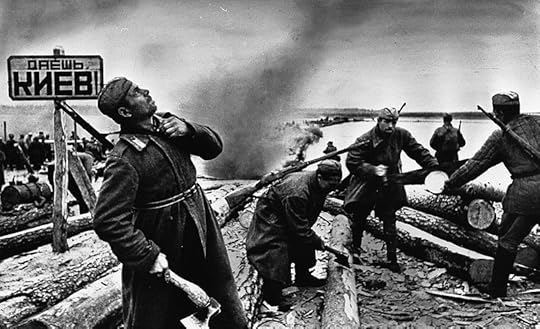
Soviet soldiers preparing rafts to cross the Dnieper (the sign reads “Onward To Kiev!”), Battle of the Dnieper, 1943 (public domain via Wikipedia)
75 Years Ago—Oct. 24, 1943: In the Battle of the Dnieper in the Ukraine, the Soviets take Dniepropetrovsk.
October 23, 2018
Today in World War II History—Oct. 23, 1943

Shoulder patch of the US First Army, WWII
75 Years Ago—Oct. 23, 1943: US First Army under Lt. Gen. Omar Bradley takes operational control of US Army forces in England.
In Singapore, provisional government of India (affiliated with Japanese) under Subhas Chandra Bose declares war on US and UK.
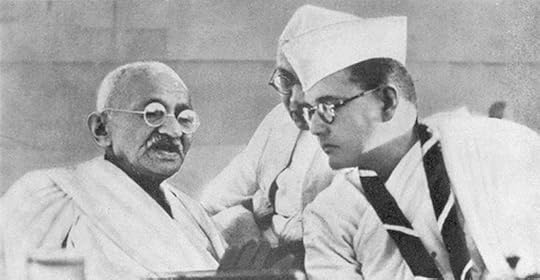
Mohandas Gandhi and Subhas Chandra Bose at the meeting of the Indian National Congress, Haripura, India, 1938 (public domain via WW2 Database)
October 22, 2018
Army Nursing in World War II – Nursing Practice
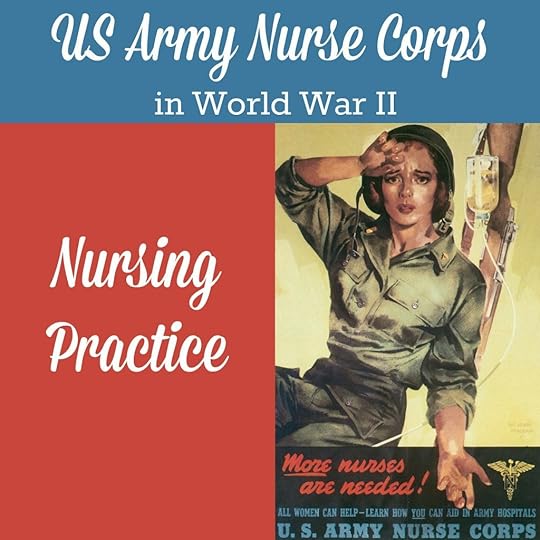 During World War II, members of the US Army Nurse Corps took care of the sick and wounded throughout the world, often in dangerous and difficult conditions. These brave women inspired four of my novels (A Memory Between Us and the Wings of the Nightingale series), so I’m sharing a four-part series on US Army nursing during the war.
During World War II, members of the US Army Nurse Corps took care of the sick and wounded throughout the world, often in dangerous and difficult conditions. These brave women inspired four of my novels (A Memory Between Us and the Wings of the Nightingale series), so I’m sharing a four-part series on US Army nursing during the war.
Part 1: Who Could Serve in the US Army Nurse Corps
Part 2: Recruitment, Training, and Military Rank
Part 3: Uniforms
Part 4: General Nursing Practice
The Ward
On the ward, the nurse was in charge, under the authority of the physician. She was assisted by male medics, who were enlisted men. In stateside hospitals, female Red Cross nurses’ aides also served. Physicians entered the Medical Corps with the rank of captain and only male physicians were admitted to the Corps.
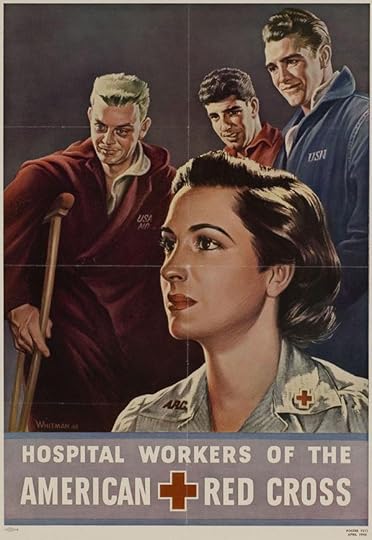
Poster for American Red Cross Hospital Workers, WWII
As was typical in the 1940s, physicians expected unquestioning, speedy obedience from nurses. However, the war shook things up. The necessities of combat meant nurses were often asked to perform new tasks and were given more authority, especially in combat zones. For the first time, nurses administered anesthesia and gave intravenous medications and fluids. Also, flight nurses were completely in charge during flight and had authorization to treat many medical emergencies. Starting next week, I’ll run a series about medical air evacuation and flight nursing.

Lt. Katye Swope of the 802nd Medical Air Evacuation Transport Squadron checks patients being evacuated from Agrigento, Sicily to North Africa for further medical treatment, 25 July 1943. (US Air Force photo)
Nursing Duties
The nurse was responsible for keeping the ward properly heated and ventilated, and for cleanliness, orderliness, and quiet—often difficult in combat theaters. She and the medics changed linens and helped the patients bathe, shave, brush teeth, change clothes, and use the bedpan or urinal. They served food and helped the sicker patients eat. Alcohol rubs were given to relax patients and prevent bed sores.
Nurses took careful notes, stored by the bedside, to monitor patient health. TPRs (Temperature, Pulse, and Respiration) were recorded at regular intervals, at least twice daily. A glass mercury oral thermometer was used. Blood pressure was measured in certain patients as well.
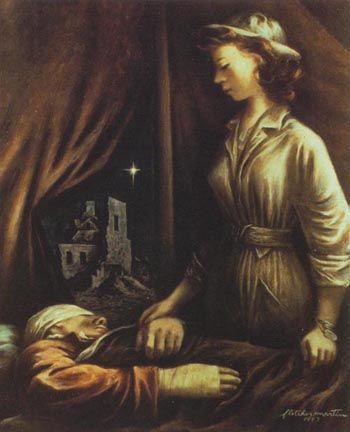
“GI Angel” by Fletcher Martin, depicting an Army nurse in North Africa, 1943 (US Army Medical Department, Office of Medical History)
Physicians relied on the nurse’s assessment of patient symptoms—signs of bleeding or infection, weakness, restlessness, anxiety, coloring, mental condition, speech, condition of the eyes and tongue, appetite, bowel and urinary functions, coughing, and pain.
Nurses were vital members of the operating room team, and in combat theaters, they often learned to administer anesthesia, close wounds, and perform other tasks.

US Army nurse preparing dressings, 15 June 1944, 13th Field Hospital, St.-Laurent-sur-Mer, Normandy (US National Archives)
Medication Administration
Medications were stored in the ward in a locked cabinet. The nurse was responsible for the key, but medics were allowed to access and administer medications in most instances. Nurses were trained to give medicine by mouth, hypodermic (now called subcutaneous), intramuscular, topical (on the skin), and by enema. Intravenous medications were to be given only under the direct supervision of a physician; however, exceptions were made in the combat theaters and for flight nurses.

Army Nurse Betty Evans checks thermometers by the medication cabinet, 8 April 1942, Iceland (US Army Medical Department, Office of Medical History)
This was long before our disposable, single-use, “universal precautions” era. Syringes were made of glass and were sterilized in bichloride of mercury before reuse. Gloves were washed and reused—and holes were even patched.
Improvisation was the rule, especially in combat areas, and nurses used their creativity and imagination to turn trash into useful items.

Army Nurse Bernice Simmet selects a pair of rubber gloves, Fort Benning, GA, 20 July 1941 (US Army Medical Department, Office of Medical History)
Sources:
Tomblin, Barbara Brooks. G.I. Nightingales: the Army Nurse Corps in World War II. Lexington: University Press of Kentucky, 1996. (A wonderful history, including all theaters, full of personal stories).
Technical Manual TM 8-220: Medical Department Soldier’s Handbook. Washington DC: War Department, 5 March 1941. (The official Army handbook used by medics, which contains a lot of information on nursing duties).
Today in World War II History—Oct. 22, 1943

Robert Laycock, 1943 (Imperial War Museum)
75 Years Ago—Oct. 22, 1943: Maj.-Gen. Robert Laycock becomes British Chief of Combined Operations.
In Italy, British Eighth Army crosses River Trigno north of Termoli at night.
A German meteorological team is landed by U-boat U-537 at Martin Bay, Labrador to establish weather station “Kurt,” which isn’t discovered by the Canadians until 1981.

German Weather Station Kurt on the Hutton Peninsula, Labrador, 22 Oct 1943 (German Federal Archive)
October 21, 2018
Today in World War II History—Oct. 21, 1943

First Sea Lord Admiral of the Fleet Sir Dudley Pound on Queen Mary en route to Québec Conference, 1943 (Imperial War Museum A 16722)
75 Years Ago—Oct. 21, 1943: Former British First Sea Lord Adm. Sir Alfred “Dudley” Pound dies, age 66; Adm. Andrew Cunningham appointed First Sea Lord.
Luftwaffe bombs Naples for first time; air raid also hits US hospitals at Mostra Fairgrounds, killing 11 patients and medical personnel.
October 20, 2018
Today in World War II History—Oct. 20, 1943

Irena Sendler, 1942 (public domain via Wikipedia)
75 Years Ago—Oct. 20, 1943: United Nations War Crimes Commission is established.
Germans arrest Polish social worker Irena Sendler for smuggling 2500 Jewish children out of the Warsaw ghetto; she will be saved from her death sentence when Polish Resistance members bribe the guards to release her and mark her off as already executed.
October 19, 2018
Today in World War II History—Oct. 19, 1943

Chemical structure of streptomycin (public domain via Wikipedia)
75 Years Ago—Oct. 19, 1943: Third Moscow Conference begins: Allies agree to strip Germany of territory acquired since 1938; Stalin agrees to demand Axis unconditional surrender.
Scientists at Rutgers University in NJ isolate streptomycin, the first aminoglycoside antibiotic—in clinical trial in March 1946, future Senator Robert Dole becomes the third patient treated with the medication.
October 18, 2018
Today in World War II History—Oct. 18, 1943

Recruiting poster for RAF Bomber Command, WWII
75 Years Ago—Oct. 18, 1943: Germans send first Roman Jews to Auschwitz; of 1200 Jews arrested in Rome, only 16 will survive the war.
On a mission to Hannover, Germany, RAF Bomber Command suffers its 5000th loss out of 144,500 sorties, 3.5% loss rate.
October 17, 2018
Today in World War II History—Oct. 17, 1943

“Bridge over the River Kwai” by Leo Rawlings, depicting four prisoners of war building bridge on Burma Railway, 1943 (Imperial War Museum)
75 Years Ago—Oct. 17, 1943: Japanese complete Burma-Siam “Death Railway,” 93,000 Allied POWs and natives were killed in its construction.
Germans begin evacuating art from the Abbey of Monte Cassino to the Vatican for protection as the Allies approach; most of the monks, nuns, orphans, schoolchildren, and refugees go to Rome as well.
Last German auxiliary cruiser in Pacific, Michel, sunk by sub USS Tarpon off Chichi Jima.
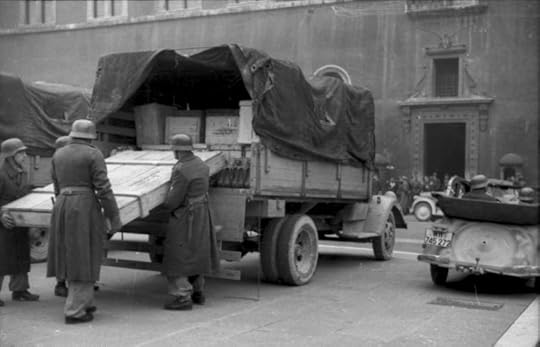
German troops unloading art treasures from the Abbey at Monte Cassino in the Vatican for protection, late 1943 (German Federal Archive: Bild 101I-729-0003-13)
October 16, 2018
Today in World War II History—Oct. 16, 1943
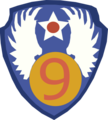
Patch of the US Ninth Air Force, WWII
75 Years Ago—Oct. 16, 1943: After transfer from Italy, US Ninth Air Force is re-formed as a tactical force at Sunninghill, England under Lt. Gen. Lewis Brereton (Eighth Air Force to be a strategic force).
US-built Lend-Lease destroyer escorts, transferred to the Royal Navy (which calls them frigates), enter combat for the first time, escorting an Allied North Atlantic convoy.
Italian Air Force begins to fly with Allies in Italy.
New song in Top Ten: “They’re Either Too Young or Too Old.”



